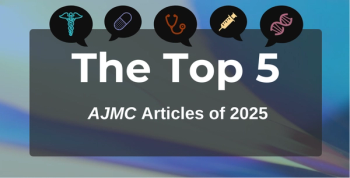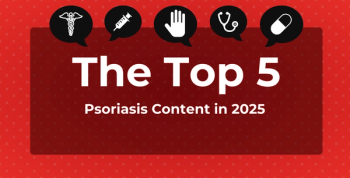
Assessments Help Identify Patients With Myasthenia Gravis at Risk for Respiratory Distress
A series of portable respiratory function tests for patients with mild to moderate myasthenia gravis (MG) were found to be useful methods to diagnose previously unidentified at-risk cases for respiratory deterioration.
Results on 9 same-day respiratory functions tests used in an outpatient neuromuscular clinic for 136 patients living with
“This study emphasizes the critical need for routine respiratory monitoring in patients with generalized MG. By using straightforward, office-based assessments, we can detect early signs of respiratory weakness, which is crucial for preventing severe complications. Ultimately, this approach can enhance the management and quality of life for those affected by the disease,” senior study author Hans Katzberg, MD, MSc, FRCPC, told The American Journal of Managed Care®.
A formalized respiratory risk assessment could prove especially critical for female patients, who were found to be nearly 2 times more likely to present with an abnormal forced vital capacity (FVC) (OR, 2.89; P = .01) and about 1.5 times more likely to present with an abnormal maximal inspiratory pressures (MIPs) (OR, 2.48; P = .022) compared with male patients.
“Our study highlights the utility and need for formal respiratory assessment in all MG patients irrespective of symptom burden on presentation, and the potentially higher risk of deterioration in females,” the authors wrote. “We believe that these findings would be applicable across all MG neuromuscular ambulatory clinics, where the majority of patients have MG disease of mild to moderate severity.”
Myasthenic crisis, a potentially life-threatening complication, occurs in up to 20% of patients who have MG, according to the study. Mild abnormalities of respiratory muscle strength and endurance can progress to respiratory failure. Respiratory dysfunction can occur along with subtle symptoms, such as exercise intolerance, generalized fatigue, and sleep-related respiratory dysfunction.
MG is most diagnosed in young women and men aged 50 and older, according to Johns Hopkins Medicine.2
The 9 tests administered to Toronto General Hospital/University Health Network Neuromuscular Clinic patients from January 2016 to August 2019 were: myasthenia gravis quality-of-life score (MG-QOL-15), myasthenia gravis impairment index (MGII), Epworth sleepiness scale (ESS), University of California-San Diego Shortness of Breath Questionnaire (UCSD-SOB), Modified Medical Research Council Dyspnea Scales (MRC-DS), supine and upright FVC, MIPs, and sniffnasal inspiratory pressures (SNIPs).
Overall, patients scored low on respiratory and disability scales. Yet slightly more than half (54%) of the study participants had respiratory and/or bulbar symptoms; 33% had baseline abnormal FVC, with no significant postural changes; 40.4% had abnormal MIPs; and 37% had abnormal SNIPs.
Significant correlations were observed between MIPs, FVC, and SNIPs; between MGII/MG-QOL15 and UCSD-SOB/MRC-DS; and between ESS and respiratory scales in the whole group.
The authors had hypothesized that supine FVC was superior to seated FVC testing in detecting subclinical respiratory dysfunction, but the results did not show a significant difference.
The study was not designed to identify patients at imminent risk for respiratory deterioration, but rather, to flag patients who have reduced respiratory muscle strength and vital capacity and may benefit from closer clinical monitoring.
“To our knowledge, this is one of the largest series describing the value of multiple respiratory tests in a comprehensive sample of patients living with MG, as compared to prior studies in patients with MG and other neuromuscular diseases,” the authors wrote. “There are no definitive standards to diagnose respiratory muscle weakness in patients with neuromuscular diseases. Simple and reliable methods to identify patients at risk for ongoing or worsening respiratory function may help direct therapies at an early stage to those in need of interventions, who may otherwise go unnoticed.”
References
1. Alcantara M, Barnett-Tapia C, Bril V, et al. Office-based respiratory assessment in patients with generalized myasthenia gravis. Elsevier. 2024;40:1-6. doi:10.1016/j.nmd.2024.05.005
2. Myasthenia gravis. John Hopkins Medicine. Accessed August 9, 2024.
Newsletter
Stay ahead of policy, cost, and value—subscribe to AJMC for expert insights at the intersection of clinical care and health economics.








































